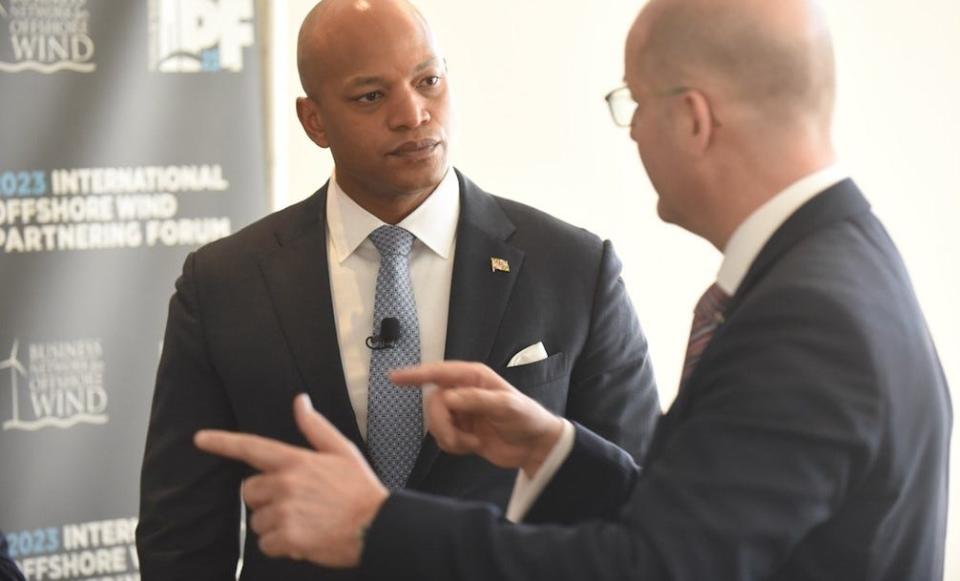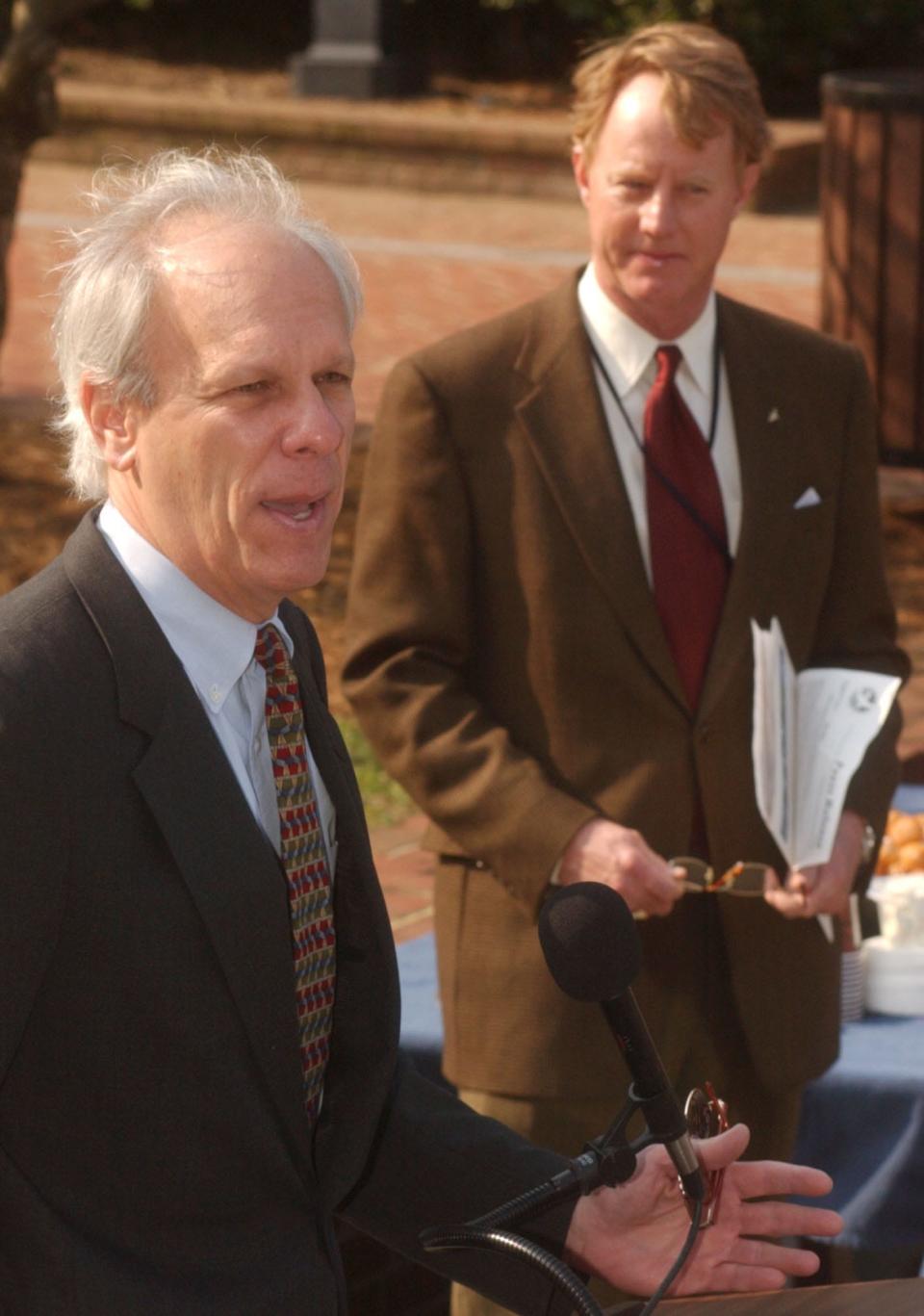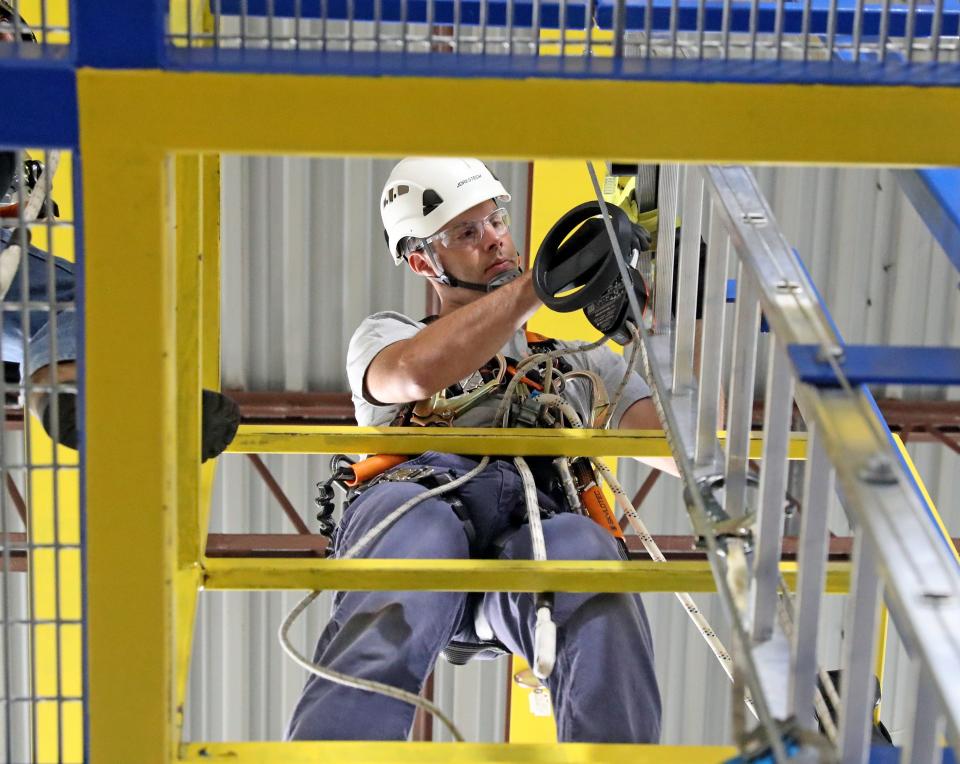How Maryland is working to make green future plan accessible to underserved communities
In the 50 years the Maryland Energy Administration has existed, being tasked with ensuring a future of green energy has required the state to examine how even underserved communities can benefit.
Those efforts have been bolstered by the Justice40 program introduced by the Biden administration and embraced by Gov. Wes Moore amid a move to achieve net zero greenhouse gas emissions in Maryland by 2045. Under the guidance of director Paul G. Pinsky, a longtime environmentalist and former state senator, it is about incremental improvements rooted in environmental equality.
"This is driven by the Climate Solutions Now Act in 2022 that called for 60% reduction of greenhouse gases by 2031 and being carbon neutral by 2045," said Pinsky. "Gov. Moore has called for 100% clean energy by 2035 and these are the right goals, but they won't be easy and will be heavy lifts. We can't keep putting things off because the climate has changed too quickly in the area of weather incidents like wildfires and sea level rise."
More on Maryland green energy: Moore wants Maryland to lead on offshore wind, and here's how Crisfield is already pioneer
Will Maryland's 'green' future be accessible by all?

For Pinsky, the key is whether the public buys into the urgency of climate change and if communities often left out of the conversation will have the resources to be part of the "green" future.
In January 2021, President Biden’s Executive Order 14008 – Tackling the Climate Crisis at Home and Abroad announced Justice40, which mandates that at least 40% of the benefits of certain federal programs must flow to disadvantaged communities.
Among the targeted areas are:
investments in clean energy and energy efficiency;
clean transit;
affordable and sustainable housing;
training and workforce development;
the remediation and reduction of legacy pollution;
and the development of clean water infrastructure
ow-income communities and sustainability
Making sure clean energy projects lift up disadvantaged communities

"We want to make sure that people who rent rather than own have energy efficiency to lower their bills. That might mean underwriting the cost of installing new windows and programable thermostats. Energy efficiency is the cheapest way to a clean environment," Pinsky said.
Among the possibilities for renewable energy in areas with high amounts of renters could even be solar panel areas near the property where that could offset a portion or all of the energy bills for residents. Yet community solar programs face the same challenges as other types of renewable energy when it comes to achieving scale.
That requires investment in areas more prone to economic issues. Pinsky noted that areas of poverty are also statistically areas with higher minority populations. They too, Pinsky contended, need to be part of the "green" conversation.
How that drive will impact offshore wind plans

"President Biden is a real clean energy champion. And just as important, he’s making sure that clean energy projects help lift up disadvantaged communities that have often been left behind,” said Jeff Grybowski, US Wind CEO. “At US Wind, we have made industry-leading commitments to ensuring minority owned businesses are participating in all phases of project development, including our work at Sparrows Point Steel in Baltimore."
Grybowski noted whether by providing sustainable economic opportunities or cleaner air for the region, US Wind "stands ready to partner with the Biden administration on these efforts to advance environmental justice.”
STATUS OF WIND ENERGY PROJECTS: Maryland doubles down on offshore wind with $1.6 million investment
For its part, Ørsted highlighted its investment in a future that actively teaches Science Technology Engineering and Mathematics for an emerging economy more inclusive of sustainable energy jobs.
“We support the J40 Initiative and are committed to opening the immense benefits of offshore wind to disadvantaged communities," said Maddy Voytek, head of government affairs and market strategy for Maryland for Ørsted. "As part of our development of Skipjack Wind, we are committing $10 million to fund STEM education programs in Maryland’s local school systems, universities and community organizations. We are also proud that the Jane Addams Resource Corporation, which trains unemployed and underemployed Marylanders."
Voytek noted Ørsted includes skills and investments such as welding and port infrastructure upgrades at Tradepoint Atlantic for the Skipjack Wind development.
“Our goal is to make offshore wind careers more accessible to Maryland students and residents, no matter where they started in life, and to help the state reach its ambitious clean energy goals in an equitable way," Voytek said.
US Wind and Ørsted currently have federal leasing agreements to operate their scores of turbines in the ocean between 15 to 21 miles off the coast of Maryland. The Baltimore-based US Wind is considering properties in Ocean City for the maintenance and operations of the turbines that are scheduled to be operational by 2026.
What is an underserved community?
According to the J40 program, an underserved community is defined by either:
Geography: a group of individuals living in geographic proximity (such as census tract), or
Common condition: a geographically dispersed set of individuals (such as migrant workers or Native Americans), where either type of group experiences common conditions.
The program has identified approximately 27,251 census tracts nationwide as disadvantaged, including areas in Maryland, Delaware, and Virginia.
More on EV vehicles and Maryland Maryland ahead of most US states in push for electric cars
This article originally appeared on Salisbury Daily Times: Maryland's green future: How state plans to make it accessible to all

